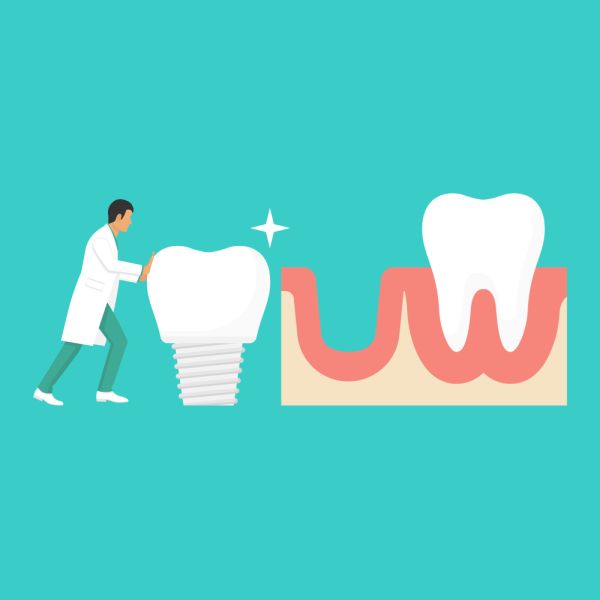How Dental Implants Can Help You Get Your Smile Back

Many people lose one or more of their teeth due to age, decay or an accident. Besides having difficulty with chewing food, the loss of teeth can also lead to low self-esteem. One way of resolving these issues is to get dental implants. A dental implant procedure involves the permanent placement of teeth through surgical procedures in the upper and/or lower jaw. The teeth are connected through connectors called abutments, which are placed on top of the implant. During this process, a custom-made crown matching the rest of the teeth is placed on top of the tooth.
Benefits of dental implants
Regaining a confident smile
Depending on the position of the tooth, teeth loss can make anyone very self-conscious about smiling in public. Dental implants can help the person regain their lost confidence.
Restoring the ability to eat favorite foods
Losing teeth can reduce the ability to eat everything that they want. This not only means that we cannot enjoy the foods we like but can also affect our health. Through dental implants, these functionalities can be brought back, enabling us to eat everything that we want.
Providing support for adjacent teeth
The empty space left by the lost tooth can make the adjacent teeth move out of their position, which leads to misalignment. An implant fill will this space, enabling the teeth to maintain their position on the jaw.
Help to prevent bone loss
Teeth loss also tends to trigger bone-loss in the jawbone. The connecting of teeth provides the jaw with the stimulation it needs to maintain itself. Unlike other replacement procedures, dental implants provide the stimulation that the jaw needs, thus helping it maintain its bone mass.
Restoring bite force
The implants consist of a titanium post that is placed in the bony socket of the jaw. This enables the person to bite more or less in the same way they bite with a natural tooth.
Preventing changes in the shape of the face
Our teeth support the structure of our face. If the teeth are no longer there to provide this support, the structure of the face can change, making us appear older. Implants support the face in a similar way to natural teeth, helping it maintain its shape.
Dental implant types and procedure
Dental implants are one of two types: endosteal or subperiosteal. Endosteal implants are the ones that people usually refer to when talking about dental implants. It involves embedment of the titanium implant in the bony socket of the jawbone. After the implant is placed, the area is allowed to heal for a period of four to six months. Once healed, the tooth is attached to the titanium post.
The subperiosteal method is different from endosteal as the implant is not placed in the socket. In this procedure, the implant goes on or above the jawbone. Subperiosteal treatment is preferred by a patient who does not want to tamper with their jawbone. It is also used for people who cannot receive implants in their jaw because of a lack of bone.
If you are concerned about your dental health or suffering from confidence issues due to a lost tooth, consult your physician to discuss the possibility of a dental implant.
Request an appointment here: https://familychoicedentistry.com or call Family Choice Dental at (505) 634-5657 for an appointment in our Albuquerque office.
Check out what others are saying about our dental services on Yelp: Dental Implants.
Related Posts
If your teeth are spaced irregularly, you might not have great self-esteem and may consider trying teeth straightening. Plus, the issue might change your oral hygiene habits. One reason is that food might get stuck in them and be difficult to remove. That can weaken the teeth and gums, leading to complications. Keep reading to…
Dental problems can happen at any time and often require immediate help to relieve pain and avoid potential complications. If you have urgent dental concerns, you might look for an emergency dentist or a same day dentist. Knowing the difference between these dental professionals can help you choose the best option for your needs.An emergency…
A kid-friendly dentist can significantly shape a child's perspective on oral care by making visits pleasant, approachable, and even enjoyable. Early experiences have a lasting effect on a child's attitude toward brushing, flossing, and maintaining routine checkups. When children feel calm and supported during dental appointments, they are more likely to maintain good habits and…
An implant dentist provides a wide range of services to restore oral health, enhance smiles, and improve overall dental function. These dental providers specialize in dental implants, a reliable and long-lasting solution for missing teeth. From placement to aftercare, the services offered by an implant dentist are designed to meet each patient’s dental needs.Dental implants…
